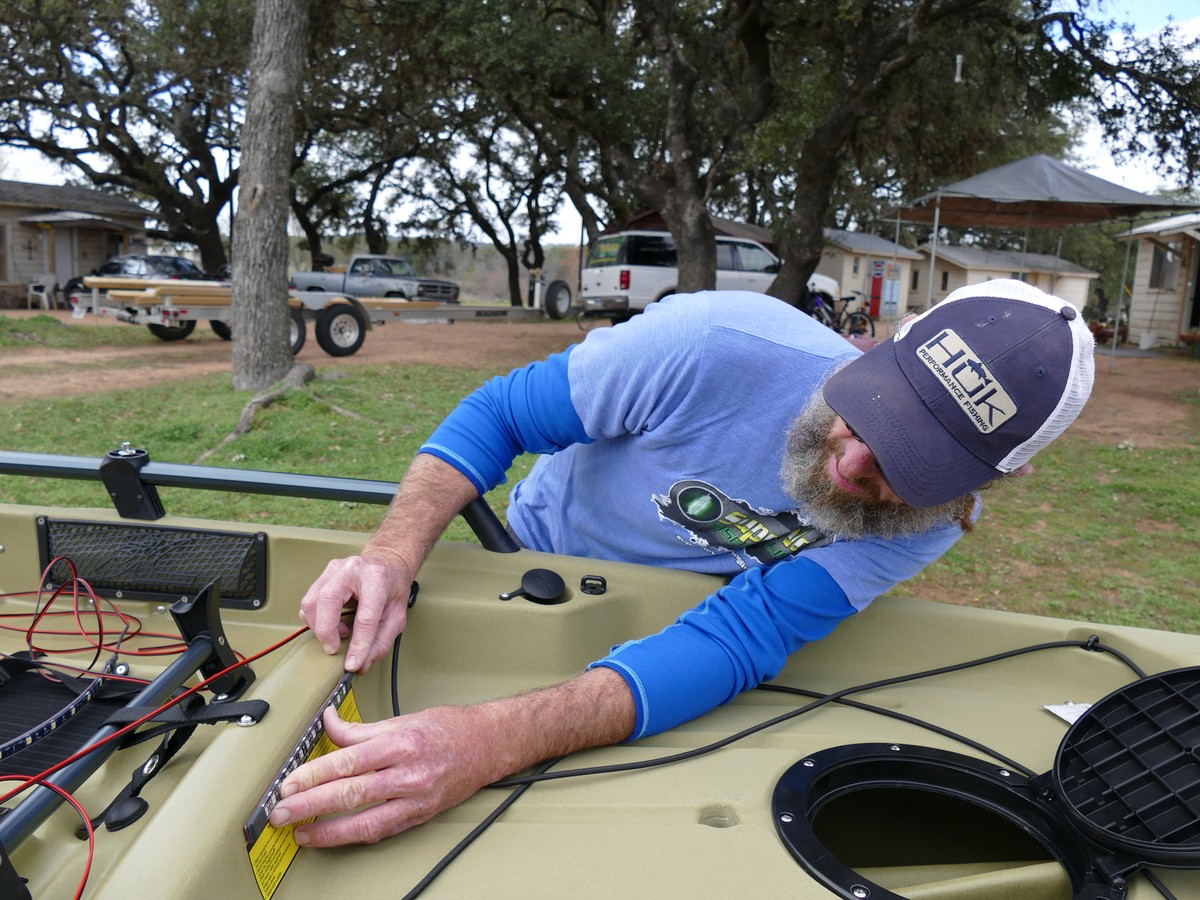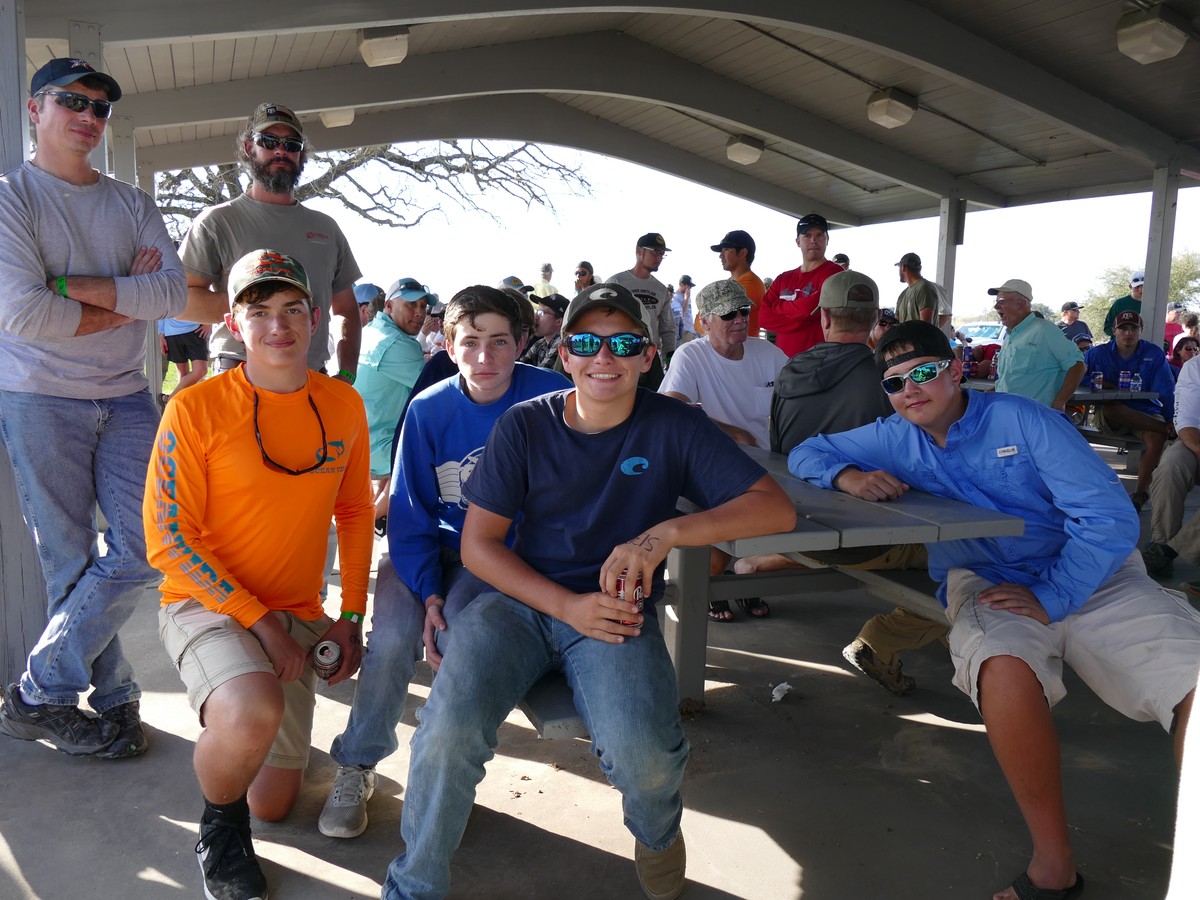
It’s finally time for the 2017 kayak tournament trails to fire up. Some trails get going in January, while others wait for the March ice to melt. Down here in Texas, the KATS (Kayak Angler Tournament Series) begins in mid-February.
Don’t get me wrong, you’ll definitely see me on the water getting my fall and winter bassin’ on, but I also use that time to repair and replenish.
Use The Off Season To Repair And Maintain
Repair occurs year round, but is best managed during the offseason with a review of any kayak tune-ups that require attention, a complete inventory of rods and reels that need upkeep or repair, and vehicle and trailer maintenance.
Over the course of a year of fishing, your kayak (hopefully a Hobie) may need a little downtime TLC. Whether it’s truing up your rudder, getting those fins nice and straight, wiring for electronics, or adding some SuperNova Fishing Lights, winter is a great time to address these items.
The growing number of Hobie H-Rail accessories has me rethinking Railblaza mounts for my cameras. Accessorizing my Pro Angler is easy because Hobie makes tricking out a kayak affordable.
Reels really talk to you when they need attention, but rods can be a little less vocal. I recommend checking all of the rod guides and eyelets. A cracked or chipped eyelet can fray your line and cost you a photo op with your personal best.
For avid anglers, annual reel maintenance is required to ensure smooth and efficient casting, whether you work on your own equipment or leave upkeep to a reel and rod repair specialist.
Last but not least is vehicle and trailer maintenance. Nobody wants to be broken down in Nowheresville, Texas at 4AM because of a failed wheel bearing or dead battery.
Watch For Sales To Stock Up On Equipment
For me, replenishing begins in November. I look for ways to trim costs wherever possible by keeping an eye out for sales. Black Friday and Cyber Monday offer big discounts. And unless I’m trying out a new product, purchasing line in spools of 600 yards or more offers big savings over 200-yard spools.
If you love a particular hook, buying in bulk saves big bucks. Gamakatsu offers bags of 25- to 100-count for their best selling EWG hooks.
After rebuilding my inventory, organizing my equipment, and servicing vehicle and trailer, I strip the line off of my Daiwa reels and spool them with fresh line and conditioner. I primarily use fluorocarbon, but use braid and mono for technique or cover specific applications. My favorites are Sunline Shooter Super Fluorocarbon, Sunline FC Fluorocarbon Leader, Seaguar Senshi Monofilament, Power Pro Super 8 Slick Braid, and Suffix 832 Braid.

Research, Plan, And Execute
Next, it’s time to do some lake research, get a good game plan, and tie on some baits. Weather patterns, water temps, maps, cover, structure, forums, the local tackle shop guru, and Google Earth are great topics and sources to help in setting up your strategy.
Bass fishing can be a very heady experience, and sometimes it helps to take a step back, remember what time of year it is, and rely on all of your studies to put you in the right place. Can’t find bass during pre-spawn? Work main lake points with moving baits, Carolina rigs, jigs, and Texas rigs. Remember where, how, and under what conditions you were working a bait when it got blasted by Ol’ Bessie, the toad of toads.
Pre-fishing a tournament, whether it’s an old favorite or a completely new lake, can pose challenges. It’s really easy to fall into old stand by spots on a well-fished body of water, which is why I look for new water on familiar lakes, and am usually pleased with new discoveries. Not only do you have fewer anglers to contend with, but the fish tend to be less pressured.

When fishing a new body of water, I try to find an area with diversity: shallow water, deep water, channels, flats, primary and secondary points, structure, and biodiversity. This provides the best access to the prevalent patterns occurring at the time and really develops your angling skills.
Hobie Pro Angler Performance
At wind speeds less that 12 to 15 mph, my Hobie Pro Angler gets me on top of my spots at a cruising speed of 4.5 mph. Knowing this, I like to get the big pedal out of the way up front so I can settle into my groove and fish with a clear mind.
Less Is More – Cut The Chit Chat
On the water it can be fun and informative talking with other anglers, but seasoned anglers generally don’t like getting hit with, “What are you catching them on” right off the bat. Sparking off a genuine conversation can lead to an exchange of information, but don’t be discouraged if an angler has no interest in conversation.
Respect an angler’s privacy. For all you know, their time on the water is their only opportunity for a little solitude. I usually like to let an angler tell me how they are doing, what they’re catching them on, and where the bass are at that time of year.
“Dock Talk” can be dangerous to consume without questioning the intent. If one person tells me they catch all of their fish on a watermelon red worm, I won’t be making that last minute $200 next day air order of watermelon red worms. That is the most common color to divulge. If ten people tell me that same thing, I’ll probably bring a few more bags of watermelon red with me.
Now it’s time to make a checklist of everything you’ll need on tournament day. I don’t want to be the guy that left his MirageDrive 180º at home some 250 miles away because I forgot my list.
Lists should include everything from baits, food and beverage, camera(s), paddle, net, measuring device(s), charged batteries, sun protection, and the all-important fishing license, to name a few. Lists also give you the confidence that you did not forget anything. Take it a step further with a comprehensive template that eliminates the possibility of forgetting an item or two.
Finally, before the first tournament of the season, read and understand the tournament rules to reduce the risk of inadvertently disqualifying yourself. Get on the forums, email the tournament director, and talk to fellow anglers if you have any doubts as to what’s required of contestants.
There’s a good chance of finding a kayak tournament near you, and the cost is usually affordable. Though not for everyone, tournaments provide a great opportunity to talk to fellow kayak anglers, make new friends, and see how the other anglers set up their kayaks. They’re a lot of fun when you play by the rules, and you’ll earn the respect of your fellow anglers by following good tournament etiquette on and off the water.
Whether you are a recreational angler, a tournament angler, or both, I sure hope these topics encourage you to get out on the water for plenty of fishing fun. Wear your PFD’s, tight lines, and a successful 2017 fishing season to all.
Check back weekly for new videos and stories by the Hobie Fishing Top Guns.